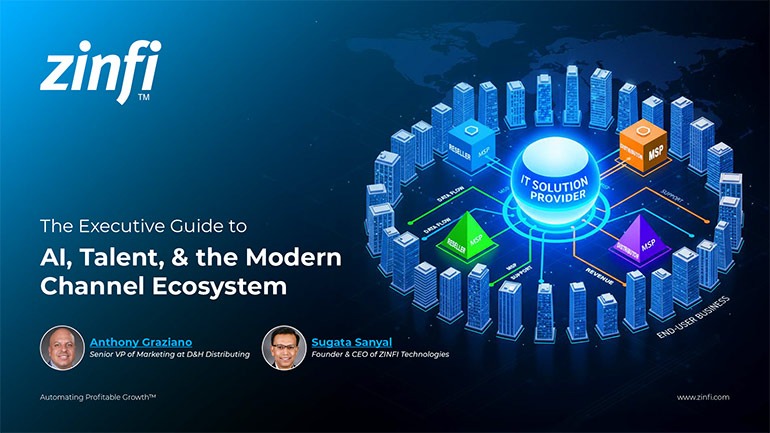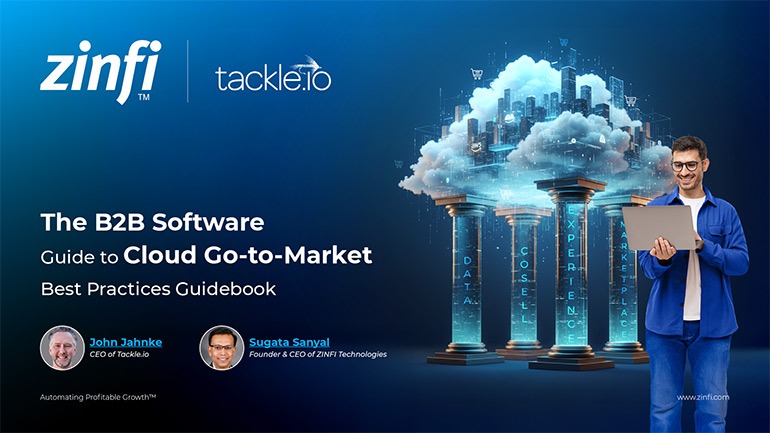Best Practices Articles

5 Mistakes Most Channel Marketing Teams Make
During the past decade, around 500 enterprise organizations have invested into some sort of through-channel marketing automation (TCMA) capabilities to enable their partner base. However, in most cases these channel automation programs tend to fail due to a core set of issues. We have been fortunate enough to serve many global organizations over the past decade, and we have seen the mistakes organizations make in rolling out TCMA platforms. In this article we will explore five core principles that most organizations fail to follow, and we’ll show you how you can avoid these mistakes with a little bit of planning and thinking ahead.
But before we get into the details, let’s take a minute to quickly define through-channel marketing automation. TCMA platforms provide a set of integrated tools for partners to use when selling through the channel. Vendors can leverage a TCMA platform to provide marketing and sales assets that partners can quickly co-brand and use to generate demand and close deals. TCMA platforms are used in a variety of industries, like automotive, retail, finance, insurance, technology, manufacturing and more. Just about any organization can successfully deploy a TCMA platform. They key is to be aware of the following pitfalls and know how to avoid them.- Understand your partners. It is always exciting to launch a cool channel marketing automation platform with lots of campaigns and tools for deploying tactics like search, social, email, events and microsites. However, if you jump in head-first and attempt to use an array of marketing tactics and distribute a bunch of content right away, you set yourself up for failure. It’s a lot like launching a product in the marketplace without truly understanding who your buyers are. First things first: While vendors selling through the channel tend to do a lot of research on launching products through the channel, they rarely actually go out and survey their partner base to understand which tools, tactics and campaigns the partners can actually use. Yes, it is true in some instances that partners are not marketing people and may not be able to provide critical feedback, but it never hurts to ask and assess the readiness of your partner base rather than spend a whole bunch of money to build campaigns and turn on tools, only to discover that adoption rates are very low.
- Know your target. A critical dimension of understanding your partners’ needs is to understand their capabilities. We have seen vendors pull together thousands of contacts from their partner base and send out an email blast to all of them promoting a channel marketing automation tool, only to realize that a mere handful of people opened, clicked through and registered to run the campaign. From the partner perspective, an indiscriminate email blast is a lot like spam. If the contact on the partner side is a marketing person or is at least responsible for marketing, why should they automatically respond to a call to action to sign up for a channel marketing tool? Unless the partner is a completely captive partner of the vendor, that partner likely carries a dozen or more vendor products and is constantly bombarded with promotions from vendors. It is very easy for partners to ignore an email if it isn’t clearly relevant to their immediate needs. Therefore, it’s absolutely critical for vendors to figure out the right target list for each program to achieve favorable adoption rates.
- Slow down to speed up. Yes, I know it sounds like a cliché, but we have seen vendors launch dozens of marketing campaigns, only to discover that barely three or four are getting traction; the others are pretty much sitting on the shelf. The best way to fight this failure mode is to launch campaigns on horizontal products that most partners sell. Yes, there will be vocal partners who want more specific campaigns. Paying attention to specific partner needs may be a partner-focused activity, but it carries the risk of creating campaigns that are relevant to only few partners but not usable by most. Therefore, figuring out horizontal demand for product marketing needs from the partner base is critical to reducing over-investment in campaign development. Unfortunately, most campaigns have a shelf-life tied to product capabilities, features, upgrades, etc., so it is essential to measure this investment against real results, rather than simply taking as many campaigns as possible from the end user marketing team and loading them up in the channel marketing platform. In most cases, a broad approach tends to yield poor ROI, but phased campaign adoption and a results-based approach can accelerate ROI and partner satisfaction substantially.
- Engage your ground troops. It is very easy at a corporate level through political might to gather a budget of a few hundred thousands of dollars with the intent of building scale, but then lose the franchise where rubber meets the road through disengagement from the region or countries. We have repeatedly seen that successful channel marketing automation and campaign rollout is a direct function of how engaged the regions or countries are with corporate teams in executing campaigns and programs. The more engaged the regions are in providing ground-level partner feedback, participating in multi-partner need studies (as I mentioned earlier) and clearly defining what each country needs, the better. With this kind of engagement, countries are more likely to get involved pulling together the right contacts for marketing at the partner company level, coaching the partners in using campaigns and tools and, most importantly, celebrating success when they deliver results. Any channel automation platform need to address the imperative “for the people and by the people”; once that happens, partner adoption goes up, the dynamic feedback loop gains momentum. On the other hand, without the engagement of ground troops, there will be a lot of unhappy people on the ground. That can be easily avoided with some regional planning and engagement at an early stage.
- Stop tinkering if ain’t broke. I have sat through many a quarterly business review session where the CMO or SVP compared the end-user marketing response to channel marketing responses, only to conclude the conversation with disappointment. While it is absolutely necessary to measure marketing ROI from any channel marketing investment and use the proper metrics, it is also necessary to set realistic expectations. Both channel sales and marketing are about building a repeatable motion that provides predictable performance. The goal is to build scale, and it is essential to do this in a step-by-step way. Too often vendors get impatient and start tinkering with tools, tactics and campaigns too soon—often to their detriment. The best way to ramp channel marketing and get predictable ROI is to run a pilot in one or more countries with 25–50 partners, vet the process, tools and campaigns, and then stick to the successful campaigns on a global basis—unless the campaigns themselves don’t translate from one region to another. In most cases, if the campaigns are properly selected for local testing, they will also scale globally. Too much tinkering with a channel program can be like imposing a death sentence in phases.
Best Practices Guidebook
 Modernizing Channel Marketing: AI and Ecosystem Enablement Best Practices
Modernizing Channel Marketing: AI and Ecosystem Enablement Best PracticesDownload for FREE
 The Channel’s Shift to Partner-Led With AI Best Practices
The Channel’s Shift to Partner-Led With AI Best PracticesDownload for FREE
 Hyperscalers, ISVs, and AI: Shaping the Future of B2B Software Distribution
Hyperscalers, ISVs, and AI: Shaping the Future of B2B Software DistributionDownload for FREE
 Definitive Guide to a Partner Ecosystem-First Sales Strategy
Definitive Guide to a Partner Ecosystem-First Sales StrategyDownload for FREE
 The Partner-Led Digital and AI Transformation Best Practices
The Partner-Led Digital and AI Transformation Best PracticesDownload for FREE
 Startup Talent Recruitment: Hiring Missionaries, Not Mercenaries
Startup Talent Recruitment: Hiring Missionaries, Not MercenariesDownload for FREE
 The Future of Partner Relationship Management with AI in Partnerships
The Future of Partner Relationship Management with AI in PartnershipsDownload for FREE
 Cybersecurity for the 99%: Strategies from the Frontline
Cybersecurity for the 99%: Strategies from the FrontlineDownload for FREE
 Mastering Partner Relationships: A Strategic Approach to Business Growth
Mastering Partner Relationships: A Strategic Approach to Business GrowthDownload for FREE
 Mastering Partner Relationship Management: Keys to SaaS Channel Success
Mastering Partner Relationship Management: Keys to SaaS Channel SuccessDownload for FREE
 Navigating the AI Revolution: Guide for Partners in the Microsoft Ecosystem
Navigating the AI Revolution: Guide for Partners in the Microsoft EcosystemDownload for FREE
 Mastering the Modern Buyers Journey: Sales Leader’s Guide to AI & Engagement
Mastering the Modern Buyers Journey: Sales Leader’s Guide to AI & EngagementDownload for FREE










